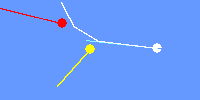 A simple cut shot |
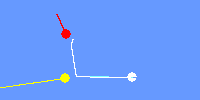 A shot at right angle, not as simple as the previous one |
In straight billiards (a.k.a. straight-rail billiards), you score a point (and play again) if your cue ball contacts the two object balls. In the diagrams I always use the white ball as the cue for the sake of consistency.
Here are basic shots which do not involve the use of rails.
 A simple cut shot |
 A shot at right angle, not as simple as the previous one |
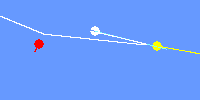 A simple draw shot |
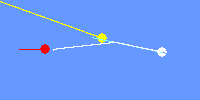 A simple follow shot, way easier than taking the yellow very thin |
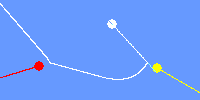 Less simple draw shot |
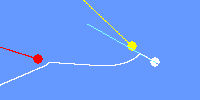 Less simple follow shot |
A common shot making use of a rail.

They are useful shots in straight-rail. Below are a few examples stolen from www.ese-metz.fr/metz/eleves/activites/billard.
How can one improve the probability to make a shot?
The red is close to the corner so it is big. This means that the effective target is much larger than the ball itself as the cue ball can hit a rail just before the red ball. When a ball is big it is a good idea to use it as second object ball the increase the error margin.
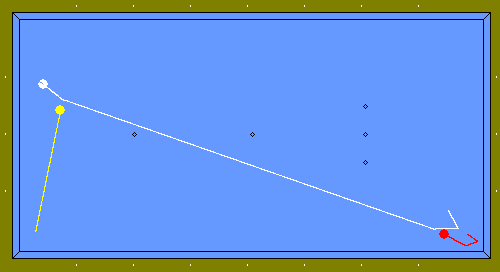
The following example shows that whether a ball is big or not also depend on the shot.
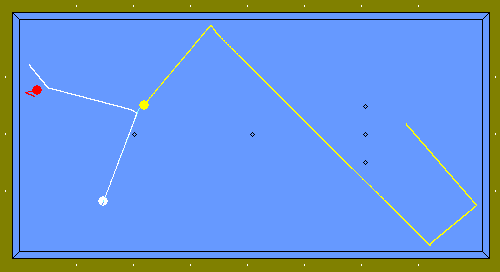 It is possible to draw directly to the red... |
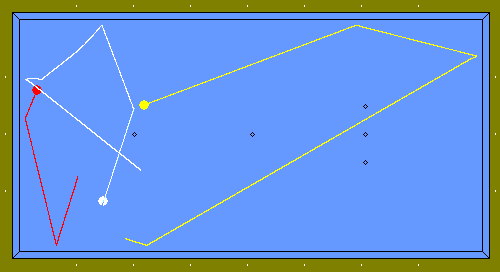 ... but if you hit a rail the red is bigger. And at the end of the point the three balls are close together |
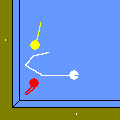
In this case too the red is big. But, unlike the previous one, this is not a long shot. The error margin matters less. On easy shots like this, it is better to think position that big balls. The red hit first remains in the corner. Had the yellow been hit first it would have gone far away. In this case, the fact that the red is close to a corner is not used to make it a big ball, it is used to make it come back to the cue ball and the other object ball.
A kiss is when the first object ball hits the second object ball or the cue ball. The trajectory of the cue ball or the position of the second object ball is modified and the shot is generally missed.
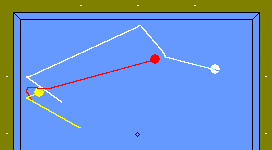 The red ball hits the yellow, so the cue ball misses it. |
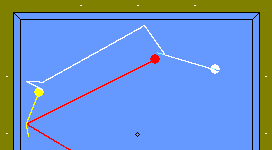 If you see a potential kiss, you can hit the red thinner (and use draw to compensate.) |
The case above is a kiss on the second object ball, what follows is a kiss on the cue ball.
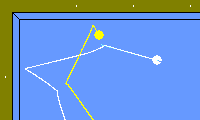
If you know how you may miss, you can think of a plan B. If for instance you fear you may not cut the object ball thin enough, you can use English so that after it hits a rail the cue ball goes toward the second object ball.
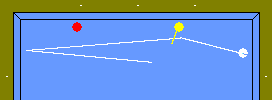 The yellow was not taken thin enough. |
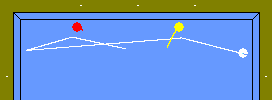 The same shot with right English. |
Here is another example. You can take the red ball to thick (and hit the short rail) or too thin (and hit the long rail.) If you hit the long rail, the angle will be very small and English will have little effect.

But if you hit the short rail, the trajectory is almost perpendicular to the rail, English will be fully effective

Therefore right English should be used. In the first case it will not matter, in the second case it may save the shot.
Straight billiards is relatively simple. You do not win by making great shots but by not missing. The best way to avoid missing is to play only easy shots. This is what position is all about.
In straight billiards, easy shots are those where the three balls are close together. So one will try to move the balls as little as possible when they are already close to one another. If this is not possible, one ball can be sent away and back.
When it is not possible not to disturb the ball, it is possible to hit just hard enough to send the object ball to the opposite rail to get it back.
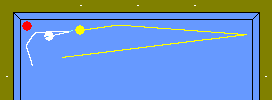
The same thing can be done along the length of the table instead of the width. The yellow ball has to travel about 20 feet and the cue ball only one, this is why little draw is used.

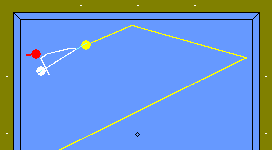 If you draw directly to the red, the yellow flees away from the other balls and you next shot will be a long one... |
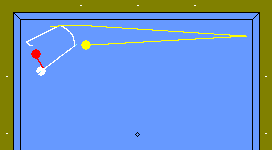 ... but you can hit the yellow thinner and take a rail (or two) before the red. The yellow stays with the other balls. |
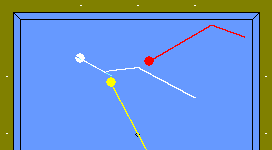 This shot is of a common kind. The problem here is that the yellow will be sent away from the other two balls... |
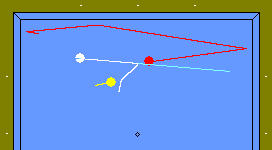 ... while if the red is hit first, the balls stay together. |
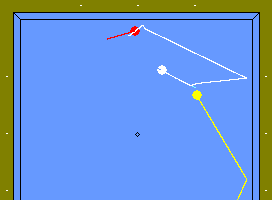 This shot is fairly easy. But played as shown the yellow ball will end up at the other end of the table. Hitting harder would make it come back but then the cue ball would hit the red ball hard and they will be out of control (which is the opposite of playing position.) |
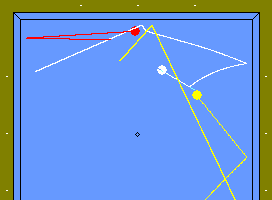 If the yellow is hit fuller, it can be hit harder as the fuller hit will kill the speed of the cue ball. It will go the the other end of the table but it will be able to come back. Follow is used to bend the (trajectory of) the ball and thus compensate for the fuller ball. |
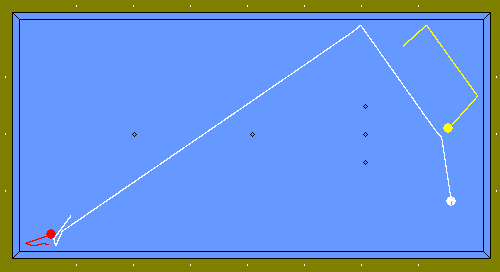 This is the obvious shot, the one which comes to mind naturally. The problem is that the yellow ball stays on the other end of the table. It seems that no variation of this shot (using some draw or follow) provides a good position for the next point. |
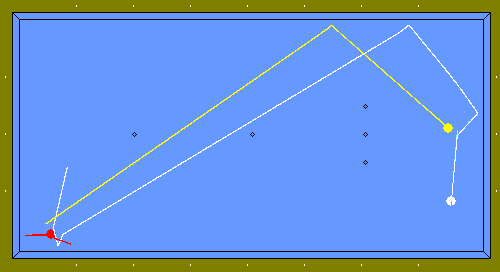 This way the three balls are gathered in a corner. Sometimes you need to play a completely different shot if you want to play position. [As diagrammed, the three balls are quite close together at the end, but even if the shot is not this successfull the yellow will come to the neighborhood of the other balls.] |
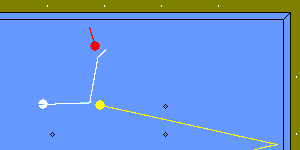 This is what comes to mind first. But it will send the yellow far away. |
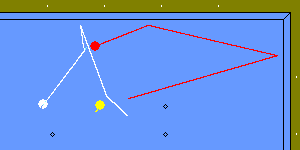 This shot is not so easy but the yellow comes back close to the other two balls. |
There is not much available in English. Robert Byrne is more or less the only American writing about three-cushion. Nothing seems to be available on straight billiards, balkline or one-cushion as Byrne deals with three-cushion only.
The figures were obtained using the simulation developed by Laurent Buchard (http://perso.wanadoo.fr/laurent.buchard.)
© Mathieu Bouville, November 11 th 2003